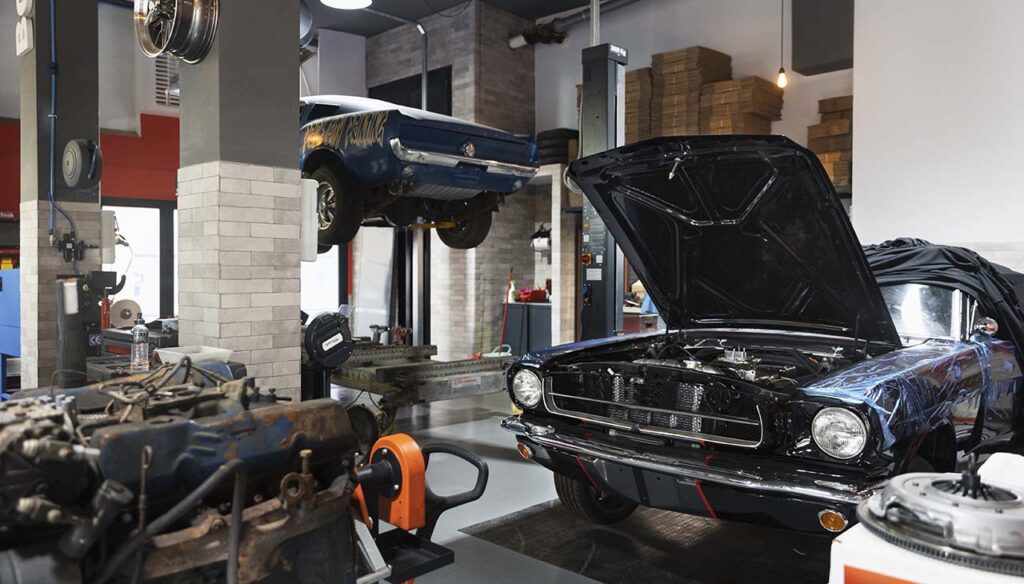The electrical system of a car is a fundamental component that ensures not only the vehicle’s operational efficiency but also its safety and comfort. This complex network of wires, fuses, and connectors powers everything from the engine’s ignition system to the headlights, dashboard indicators, and the audio system. Understanding your car’s electrical system can help in diagnosing problems, performing basic maintenance, and enhancing the vehicle’s overall performance. This section aims to demystify the workings of the automobile electrical system, providing drivers with the knowledge needed to communicate more effectively with service technicians and to make informed decisions about their vehicle’s care and maintenance.
Battery
The battery serves as the heart of the car’s electrical system, storing the electrical energy required to start the engine and powering the vehicle’s electronic components when the engine is off. It converts chemical energy into electrical energy, providing a stable electrical supply to the intricate systems that demand consistent power to operate efficiently.
Signs of a Failing Battery
Recognizing the signs of a failing battery can prevent unexpected breakdowns and ensure the reliability of your vehicle. Common indicators include slow engine crank, dimming headlights and dashboard lights, backfiring, or the appearance of the battery warning light on the dashboard. Another clear sign is the age of the battery; most car batteries need replacement every three to five years, depending on usage and environmental conditions.
Maintenance Tips
To extend the life of your car’s battery and ensure it functions correctly, regular maintenance is necessary. Tips include:
- Keeping the battery clean: Ensuring the terminals and case are free from corrosion and debris can prevent power loss.
- Tight connections: Make sure the battery terminals and cables are tightly fastened to avoid electrical resistance.
- Regular inspection: Check for signs of wear or damage, especially if the battery is over three years old.
- Proper charging: Avoid letting the battery discharge completely and recharge it if the car is not going to be used for an extended period.
- Professional testing: Have the battery tested by a professional at least once a year to gauge its health and efficiency.
By understanding the function of the battery within the car’s electrical system, recognizing the signs of a failing battery, and following these maintenance tips, drivers can ensure their vehicle remains in peak condition, reducing the risk of unexpected failures and expensive repairs.
Alternator
The alternator plays a crucial role in the car’s electrical system, acting as a powerhouse that charges the battery while the engine runs. It converts mechanical energy into electrical energy as alternating current (AC), which is then rectified to direct current (DC) to power the vehicle’s electrical systems and recharge the battery. This ensures that the battery stays fully charged, providing a continuous supply of power to the vehicle’s electronic components, lights, and accessories.
Charging the Battery
The primary function of the alternator is to recharge the battery while the vehicle is in operation. It supplies power to the vehicle’s electrical systems, such as the ignition and fuel systems, and once these requirements are met, the leftover electrical energy is used to charge the battery. This process is vital for the longevity and reliability of the battery, ensuring that the car starts without issue and that electrical components function correctly.
Symptoms of Alternator Issues
Identifying issues with the alternator early can prevent a vehicle from breaking down. Some common symptoms of alternator problems include:
- Dim or overly bright lights: This can indicate that the alternator is not providing a stable power supply.
- Battery warning light on the dashboard: Often the first sign that there is an issue with the charging system.
- Strange noises: Squealing or grinding noises can result from a failing alternator bearing.
- Electrical issues: Problems such as flickering lights, stalled power windows, or erratic dashboard display.
- Engine stalling or difficulties in starting: Since the alternator charges the battery, any issues with it can affect the engine’s performance.
Recognizing these symptoms can aid in diagnosing alternator issues before they lead to a vehicle breakdown. Regular inspection and maintenance of the alternator are crucial to the overall health and efficiency of the car’s electrical system.
Starter
The starter is an electric motor that kick-starts your car’s engine into action. When you turn the ignition key or press the start button, a small amount of current flows from the battery to the starter solenoid, triggering it to close a circuit that allows a larger current to flow directly from the battery to the starter motor. This motor then turns the engine’s flywheel, initiating the combustion process necessary to start the engine. The starter motor must exert a considerable force, as it has to overcome the initial inertia of the engine.
Common Starter Problems
Several symptoms can indicate a problem with the starter:
- No response when turning the ignition key: This can signal a dead battery or a faulty connection between the battery and starter.
- A single click, but the engine doesn’t turn over: Often caused by a faulty starter solenoid.
- Grinding noise upon ignition: This indicates that the gears connecting the starter to the flywheel are worn out.
- Frequent stalling: If the car starts but stalls frequently, it could point to issues with the starter’s electrical connections.
Troubleshooting Tips
If you suspect a starter problem, consider the following troubleshooting tips:
- Check the battery: Ensure the battery is fully charged and that connections are clean and tight.
- Inspect the starter solenoid: Locate the starter solenoid and check for any visible signs of wear or damage. A malfunctioning solenoid can often be the culprit.
- Examine electrical connections: Look for loose wires or corroded connections at the starter and battery. Tighten any loose connections and clean off corrosion.
- Listen for unusual sounds: Pay attention to any unusual sounds when attempting to start the vehicle, as they can help diagnose a starter issue.
- Seek professional help: If the problem persists, it’s best to consult with a professional mechanic who can perform a detailed inspection and, if necessary, replace the starter.
Understanding the function of the starter, recognizing common problems, and following these troubleshooting tips can significantly enhance the reliability and lifespan of your vehicle’s electrical system.






